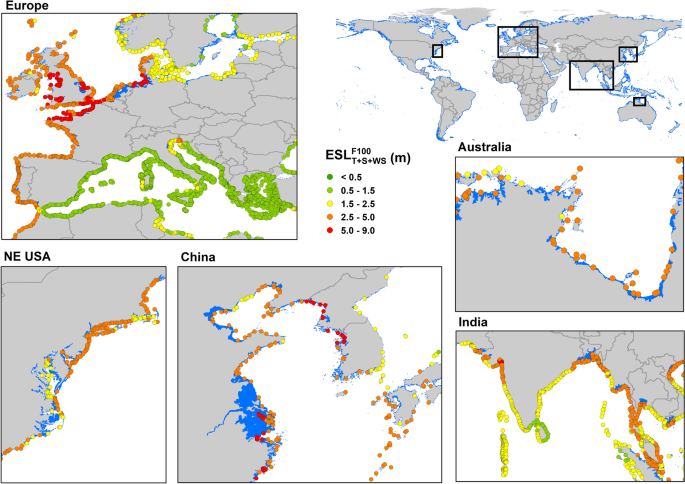In 10 Seconds? Antarctic ice – melting due to climate change - contributes substantially to rising sea levels, worsening the effects of storms and flooding. But to what extent? New research shows we are unlikely to know it this century. However, we can minimize the impact.
What is at stake? If global temperatures climbed up by 2 percent from pre-industrial levels by the end of the century, rising sea levels could affect about 700 million people living in at-risk coastal areas. Thus, we need to know what kind of sea-level rise we need to prepare for to protect homes and livelihoods. Using a huge number of ice-sheet model simulations, researchers have created an ‘emulator’ and project how melting Antarctic ice could contribute to sea-level rise. Among the scenarios was a high-emissions scenario, assuming that greenhouse gas emissions would keep increasing by 2100 and a low-emissions one, presuming that humanity aggressively cut back the release of such gases in the next few decades.
And what did we learn from this study? That due to the complex behavior of Antarctic ice we are not likely to learn in this century how much of it would melt under different scenarios. The research has another sobering prediction: even the low-emission scenario would not stop the melting of Antarctic ice, meaning that we need to prepare for rising sea levels. According to the study, we will only know around 2100 to what extent Antarctic ice will contribute to sea-level rise. By 2300, this could range from under one meter over 2000 levels to over three meters, approaching the height of a two-story house. Without stopping human-caused climate change, this level might reach over fifteen meters by 2500. And if all of the Antarctic ice melted, the rise would reach sixty meters leading to a major reconfiguration of the world's coastlines.

That is pretty scary. What makes researchers say this? Projections for Antarctic ice melting are completed by modeling. This new research ran simulations connecting the ice, the ocean, and the atmosphere under different warming scenarios to calculate different ice responses, such as melting and flowing into the sea. Grid points (helping to calculate temperature, the thickness of the ice, and its speed of movement) were 16 kilometers apart, permitting a good understanding of ice sheet behavior despite its vast size.
What behavior? How the ice sheet melts and how it moves – which depends on its composition, the layer of stones it sits on, and the floating ice shelves that currently hold it from sliding into the sea. Thawing at the base of the ice sheets can mean that they flow into the ocean and the melt speeds up. Conversely, as ice at the top melts, the reduced weight on the land lets it bounce up leading to factors inhibiting melt. The team suggested that under the favorable scenario, the ice shelves do not thin, and block the ice sheets from gradually sliding into the ocean, dramatically increasing sea levels.
OK, we heard the scenarios, what can we do with this knowledge? Based on this research we need to assert a flexible approach in planning and preparing our coastlines for sea-level rise. The large ranges of possible sea-level rise over long periods reflect how many different factors can accelerate or slow the melting of ice sheets. If we do not know for sure whether or not large swathes of London and Jakarta will be underwater in 100 or 400 years, we must be ready to adjust our response.
And what can we do now? The most important and most immediate action would be stopping or at least slowing human-caused climate change by reducing greenhouse gas emissions and removing those gases from the air. These actions are termed climate change mitigation and they could be implemented by using less fossil fuel and planting native trees. Reducing the world’s potential temperature increase would then narrow the possible ranges for Antarctic ice melt and subsequent sea-level rise, making it easier to plan for coastal changes—which is part of climate change adaptation.
Did you know?
Antarctic ice melting is one of the many contributors to sea-level rise.
If Greenland’s ice melted entirely, (which could happen over several millennia in many climate change scenarios), then seven meters above today's sea level would be added.
Water expands as it heats up. As the oceans absorb heat from the atmosphere, we see their expansion as sea-level rise which could be from one meter to over three meters, depending on how much the world warms.
Ice melting outside of Antarctica and Greenland would probably add under half a meter to current sea levels.
In the meantime, some scenarios reduce sea level by several centimeters due to increased precipitation over Antarctica!
Ilan has curated 10 research pieces with an evidence score of 4.7 out of 5 saving you 35 hours of reading time.
The Science Integrity Check of this 3-min Science Digest was performed by Dr. Anna Firsova.







